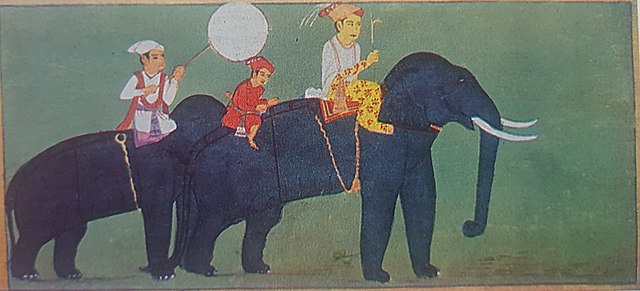Sunyeopha also Lakshmi Singha, was the 34th Ahom king, who reigned from 1769 to 1780. After the death of Suremphaa, he married the Queen Kuranganayani and became the king of the Ahom kingdom. Shortly after he was installed he became a captive of the rebels of the Moamoria rebellion for a few months but soon managed to regained his kingdom. With the help of Kuranganayani, after destroying all the Moamoria rebels including Borbaruah Ragho, Lakshmi Singha was once again crowned as king of Ahom kingdom.
Gold mohur of Lakshmi Singha, dated;1775
Copper plate inscription grant of Lakshmi Singha.
The Ahom kingdom was a late medieval kingdom in the Brahmaputra Valley that retained its independence for nearly 600 years despite encountering Mughal expansion in Northeast India. Established by Sukaphaa, a Tai prince from Mong Mao, it began as a mong in the upper reaches of the Brahmaputra based on wet rice agriculture. It expanded suddenly under Suhungmung in the 16th century and became multi-ethnic in character, casting a profound effect on the political and social life of the entire Brahmaputra valley. The kingdom became weaker with the rise of the Moamoria rebellion, and subsequently fell to repeated Burmese invasions of Assam. With the defeat of the Burmese after the First Anglo-Burmese War and the Treaty of Yandabo in 1826, control of the kingdom passed into East India Company hands.
King Siva Singha and Bar–Raja Ambika riding litter
Ahom King Siva Singha riding elephant with attendants
Silver rupee of Rudra Singha
Ahom king Rudra Singha receiving the kings of the Dimasa and the Jaintia kingdoms in his court.






